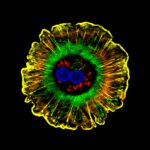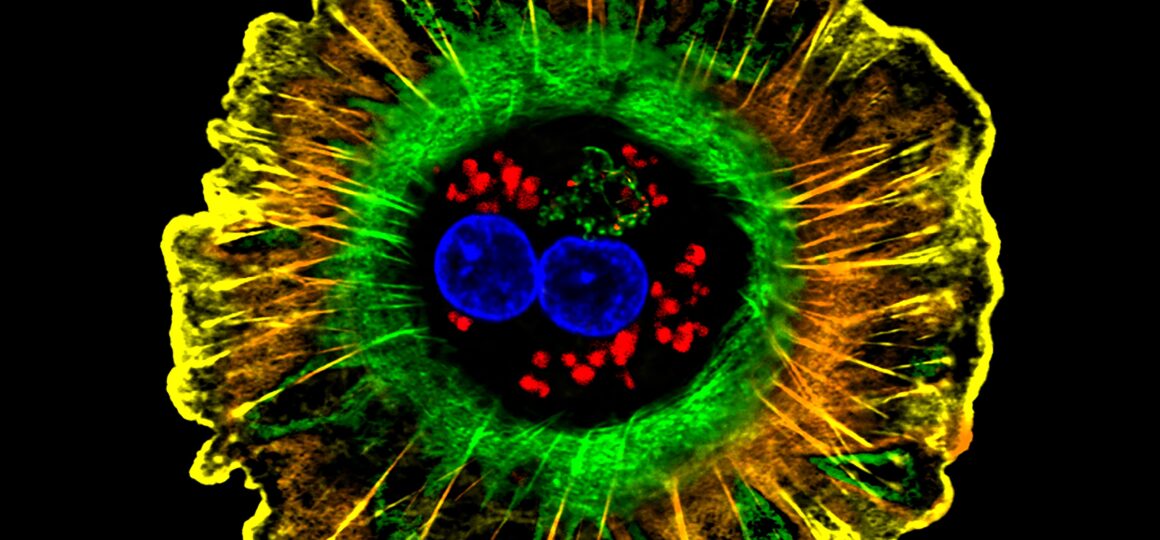Efficacy of gene therapy demonstrated
in patients suffering from Crigler-Najjar Syndrome
Crigler-Najjar syndrome is characterized by hyperbilirubinemia. If it is not treated quickly, the build-up of bilirubin, due to a deficiency in the liver enzyme UGT1A1, can cause significant neurological damage and become fatal. At the current time, the only treatment is phototherapy of up to 12 hours per day or a liver transplant. Results of European gene therapy clinical trial sponsored by Généthon demonstrates the possibility of restoring expression of UGT1A1 by using gene therapy in cases of Crigler-Najjar syndrome.
 GNT 0003, the candidate drug medicine designed by Généthon, combines an AAV8 vector with a copy of gene UGT1A1. It lowered bilirubin levels to below the toxic threshold with a single intravenous injection to such an extent that 3 patients treated with the highest dose have been able to stop using phototherapy for the last 18 months or more. The clinical trial is currently in the pivotal phase. Carried out in conjunction with the European consortium CureCN, this Phase I/II clinical trial evaluates the tolerance and efficacy of GNT 0003 in 17 patients suffering from a severe form of Crigler-Najjar syndrome. The trial started in 2017 in 4 centers in Europe – France (Prof. Labrune – Hôpital Béclère in Clamart), Italy (Prof. d’Antiga – Azienda Ospedaliera Papa Giovanni XXIII in Bergamo and Prof. Brunetti-Pierri – Hôpital Federico II), Netherlands (Prof. Beuers – Academic Medical Center in Amsterdam).
GNT 0003, the candidate drug medicine designed by Généthon, combines an AAV8 vector with a copy of gene UGT1A1. It lowered bilirubin levels to below the toxic threshold with a single intravenous injection to such an extent that 3 patients treated with the highest dose have been able to stop using phototherapy for the last 18 months or more. The clinical trial is currently in the pivotal phase. Carried out in conjunction with the European consortium CureCN, this Phase I/II clinical trial evaluates the tolerance and efficacy of GNT 0003 in 17 patients suffering from a severe form of Crigler-Najjar syndrome. The trial started in 2017 in 4 centers in Europe – France (Prof. Labrune – Hôpital Béclère in Clamart), Italy (Prof. d’Antiga – Azienda Ospedaliera Papa Giovanni XXIII in Bergamo and Prof. Brunetti-Pierri – Hôpital Federico II), Netherlands (Prof. Beuers – Academic Medical Center in Amsterdam).
The results published in The New England Journal of Medicine confirm the safety and tolerance for the treatment in all patients (5 women aged 21 to 30 years) and sustained efficacy in the three patients treated with the highest dose. The trial demonstrated restored expression of theUGT1A1 gene and a large reduction in bilirubin levels (to 149 μmol/l on average as compared to 351 μmol/l before treatment), which, in the three patients treated with the highest dose, has stayed below the toxic level after phototherapy was stopped for 80 weeks or more following treatment. No major side effects have been observed. The only symptoms were changes in hepatic enzymes and headaches which were resolved. This is the first proof of the efficacy of a gene therapy in a metabolic disease of the liver.
The aim of the pivotal part of the study, started last January, is to confirm the observed effect in a larger number of patients including children aged 10 years and over, the age at which the liver matures, and if the results are conclusive to enable a product license application at the French and European authorities. This final stage of development received significant support from the European Medicines Agency (EMA) with a PRIME designation last January.
“Gene Therapy in Patients with the Crigler-Najjar Syndrome”. Lorenzo D’Antiga et al.
N Engl J Med. 2023 Aug 17;389(7):620-631. doi: 10.1056/NEJMoa2214084.
25/08/23




COMMENTS ARE OFF THIS POST